#formula 1 history
Explore tagged Tumblr posts
Text
A General History: Points
Hello, this post is a response to an ask about the points system throughout history. Enjoy!
So, like most things in F1 the points system has changed a lot since it's inception. As stated in the ask I received, it has changed so much that it is pretty difficult to compare past drivers points to what modern drivers score. But why? And how? Let's dive in.
1950s: The Early System
The first points structure in F1. The system awarded points only to the top five finishers, along with one point to the fastest lap. It was simple and created to make counting points easy, but fair, for a much smaller grid. It went as follows:
1st: 8 pts 2nd: 6 pts 3rd: 4 pts 4th: 3 pts 5th: 2 pts
1960s-1990: Big Shifts
During this time there were a few key changes to the original system. For one, the fastest lap point was removed as they hoped to encourage consistency over speed. The points also expanded to include the 6th finisher as well as the grid size grew. The number of points first received also changed to nine. It went as follows:
1st: 9 pts 2nd: 6 pts 3rd: 4 pts 4th: 3 pts 5th: 2 pts 6th: 1 pt
The most unique thing about this era of F1 is that only certain points counted toward the championship, most often the top five or six best results. This was to stop the domination of a single driver who had an overwhelming amount of wins and even the playing field a little. So even if a driver won ten races, only five of the wins would count. This changed in 1981 and full season consistency was brought back to the limelight. This was done mostly because F1 was gaining in popularity and there was a desire among new fans to increase the rewards for victory.
1991-2002: Rewarding Victory
In 1991 the amount of points a winner gets was once more increased, from nine to ten. This was once again in order to get more rewards for finishing first. It was also because it was becoming more common for specific teams to dominate, and they wanted to incentivize them to go after wins even if they were leading the championship. The rest of the system stayed the same, and was as follows:
1st: 10 pts 2nd: 6 pts 3rd: 4 pts 4th: 3 pts 5th: 2 pts 6th: 1 pt
2003-2009: Expanding
This time saw an increase in how many finishes earned points. Second changed to a higher number to make podiums more equal as well. These changes were made in order to reward more drivers for their performance, and to deal with the growing number of teams and drivers. They also hoped to increase competitiveness by giving midfield teams a chance to score points. It was as follows
1st: 10 pts 2nd: 8 pts 3rd: 6 pts 4th: 5 pts 5th: 4 pts 6th: 3 pts 7th: 2 pts 8th: 1 pt
2010-Now: The Modern Era
In 2010 the points system was completely overhauled. There were more teams, more rider, more fans, and more attention. They wanted to make F1 even more of a spectacle and knew that fans wanted to see their drivers score points. It expanded to cover the top ten finishers and rewarded even more points to the top step. This new system was also created to help make championship fight not as tight, which is pretty contradictory to what F1 usually does. It also served to put much more emphasis on podium finishes. The fastest lap point was added back in 2019 as long as the driver finished in the top ten, and showed a new emphasis on speed. The current system goes as follows
1st: 25 pts 2nd: 18 pts 3rd: 15 pts 4th: 12 pts 5th: 10 pts 6th: 8 pts 7th: 6 pts 8th: 4 pts 9th: 2 pts 10th: 1 pt
Sprint race points were also added in 2021. What it means is that points can be scored outside of the main race and count toward the championship. This was added to create more excitement around the championship, and also cause some chaos for fan entertainment. The initial 2021 system only awarded the top three finishers, but now the top eight receive points, with 1st receiving 8 pts and 8th receiving 1 pt. This was changed in 2022 after backlash on how little the sprint results mattered.
So that is an overview of the points system. If you notice, most changes are due to three things; grid size, fan desire, and speed vs consistency.
I hope I answered any questions had.
Cheers,
-B
40 notes
·
View notes
Text
I just did some very intensive research on how many Monaco GP's have been won from anywhere other than pole.
This research has been done for no other reason but to give me hope of a CL victory tomorrow❤️❤️
Turns out that out of 71 Formula 1 Monaco Grand Prix, 39 have been won from anywhere other than pole.
Those races are named below
2022 Monaco Grand Prix
2021 Monaco Grand Prix (polesitter didn't start the race)
2017 Monaco Grand Prix
2016 Monaco Grand Prix
2015 Monaco Grand Prix
2008 Monaco Grand Pirx
2003 Monaco Grand Prix
2002 Monaco Grand Prix
2001 Monaco Grand Prix
2000 Monaco Grand Prix
1999 Monaco Grand Prix
1997 Monaco Grand Prix
1996 Monaco Grand Prix
1995 Monaco Grand Prix
1993 Monaco Grand Prix
1992 Monaco Grand Prix
1988 Monaco Grand Prix
1987 Monaco Grand Prix
1985 Monaco Grand Prix
1983 Monaco Grand Prix
1982 Monaco Grand Prix
1981 Monaco Grand Prix
1980 Monaco Grand Prix
1978 Monaco Grand Prix
1977 Monaco Grand Prix
1974 Monaco Grand Prix
1972 Monaco Grand Prix
1970 Monaco Grand Prix
1969 Monaco Grand Prix
1967 Monaco Grand Prix
1966 Monaco Grand Prix
1964 Monaco Grand Prix
1963 Monaco Grand Prix
1962 Monaco Grand Prix
1959 Monaco Grand Prix
1958 Monaco Grand Prix
1956 Monaco Grand Prix
1955 Monaco Grand Prix
1952 Monaco Grand Prix
I wish you all a great race to watch (if you bothered to scroll all the way down here)
9 notes
·
View notes
Text
Salut Gilles ❤️


17 notes
·
View notes
Text
Wanted to do something like this for a long time, but I'm not good with graphics and photoshop/Gimp stuff.
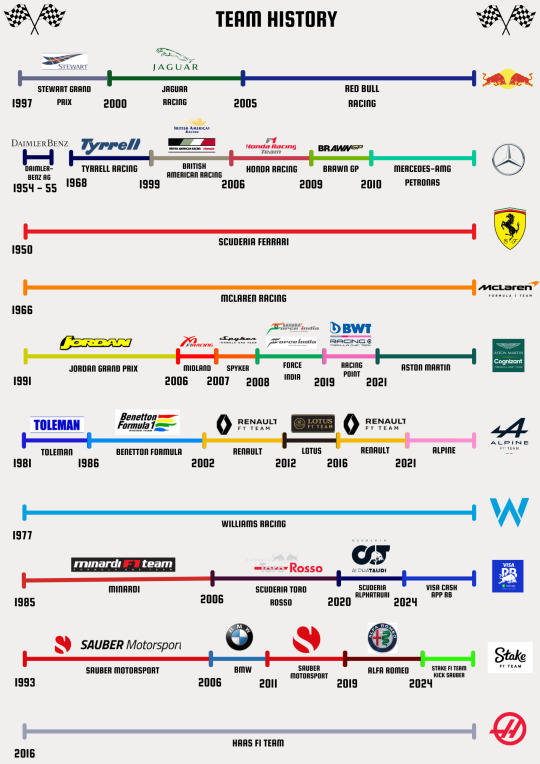
F1 Team history in visual form
More about teams in my 2024 season guide:)
#this is so helpful!!#formel1#formula 1#f1#f1 history#formula 1 history#formula one#formula one history#formula one teams#f1 teams#formula 1 teams#team history#f1 team history#motorsport#motorsports#racing
1K notes
·
View notes
Text
It was a scary night, my children, my father and I did not sleep for a minute, there was bombing, destruction and death. When morning came, we did not find water, as water was cut off from all our areas, and we did not find food because the crossings were closed, and the food we have is very expensive. Please help us to leave Gaza and live in peace. Donate here
#f1#gaza#free gaza#gaza strip#Palestine#frre Palestine#formula one#formula 1#fashion#history#art#artists on tumblr#animal#anime#illlustration#cat#text
4K notes
·
View notes
Text
youtube
British Grand Prix Recap (1958)
Video Credit: Shell Historical Film Archive
#formula 1#formula 1 history#mike hawthorn#stirling moss#peter collins#roy salvadori#ferrari#brm#silverstone circuit#england#formula one#shell historical film archive#nevil lloyd#video#1958#Youtube
1 note
·
View note
Text
I'm a helpless mother 😶
In front of meeting the mother's feeling for her infant child
I watch my husband suffering to bring only cold polluted air in order to keep our little child not crying. It's very difficult.
I wish I could move to help my husband because he was born by caesarean section


I need you my friends to help us to survive please be nice to us
Please donate for my child 🫂
✅️Vetted by @gazavetters , my number verified on the list is ( #410 )✅️
#free palestine#911 abc#formula 1#mouthwashing#pokemon#gaza gfm#gaza gofundme#gaza fundraiser#gaza genocide#palestinian genocide#help gaza#free gaza#gaza strip#gaza#gaming#gif#history#hell is a teenage girl#beauttiful girls#gorgeous#girlblogging#gay#gazaunderattack#save gaza#all eyes on gaza#palestine news#all eyes on palestine#palestine fundraiser#save palestine#i stand with palestine
1K notes
·
View notes
Text
implications of oscar (a younger, less experienced driver) winning the wdc over lando (the more senior and established member of the team) when oscar is managed by mark webber who was a more senior established driver at the team who lost the wdc to his younger less-experienced teammate of sebastian vettel and a lot of past sebastian vettel fans support lando…..
#it all feels very Greek family tragedy somehow#nature of history is cyclical etc. etc.#landoscar#oscar piastri#f1 rpf#formula 1
853 notes
·
View notes
Text


#don’t make me cry#I love Zhou Guanyu#zg24#zhou guanyu#kick sauber f1#he will go down in history and I’m happy to have been here for that#formula 1#f1#formula one#abu dhabi gp 2024#Chinese gp 2024#shanghai gp 24
671 notes
·
View notes
Text



no wall is strong enough to keep us apart
Summary: A family torn apart by the Berlin Wall reunites in an emotional embrace the night it falls, proving that love endures even the strongest barriers.
'89s!Dad!Lando x '89s!Mum!Reader
Genre: angst, fluff, historical
TW: mention of DDR, Stasi, Berlin wall, propaganda, separation, timeline is not chronological correct for the sake of the story, I know the wall has been up 28 years!
A/N: Yes I know it’s completely different from what I normally post but I really like the topic and the stories behind the families and friends that were separated back then! Let me know if you want more of historical events - btw I’m listening to Pink Floyd rn.
Navigation

Berlin, 1959
The air smelled of fresh bread and strong coffee as the bustling streets of Berlin came alive in the early morning sun. You weaved through the crowd, your fingers laced with Lando’s as your little daughter, Emma, skipped ahead, her blonde curls bouncing.
“Slow down, liebe,” (love) you called after her, but she only giggled, twirling in her little dress.
Lando laughed, pulling you closer. “She’s got your energy.”
“She’s got your stubbornness.”
“And your smile.”
Life was simple, full of love. The three of you lived in a small apartment in Mitte, not far from Alexanderplatz. Lando worked as a mechanic, saving up to open his own shop, while you worked part-time at a bakery. You didn’t have much, but you had enough.
West Berlin was only a tram ride away. You’d sometimes take Emma to see the grand department stores on Kurfürstendamm, or visit family in Charlottenburg. There were no checkpoints, no barbed wire—only a city still healing from the war, divided but still connected.
You never imagined that in just two years, everything would change.
August 12-13, 1961
The night was humid, the air heavy with something unspoken. You stood by the window, unable to sleep, watching the city lights flicker in the distance. Lando was in West Berlin, fixing a car for a client. He was supposed to come home tomorrow.
But then—
A knock at the door.
Your neighbor, Frau Keller, stood there, her face pale. “Turn on the radio.”
Confused, you hurried to the small wooden set in the corner. As the static cleared, a voice crackled through:
"Starting at midnight, the borders between East and West Berlin will be sealed off indefinitely. All crossings will be closed. A new security measure to protect the people of the DDR from imperialist threats."
Your heart stopped.
“No,” you whispered. “No, no—”
You ran outside, past confused neighbors, past uniformed officers already unrolling barbed wire. In the distance, at the Brandenburg Gate, soldiers hammered wooden posts into the ground.
The wall was already being built.
Your stomach dropped.
Lando.
Morning came, and with it, devastation.
A crude barrier of barbed wire and armed guards now split the city in two. Families screamed across the divide, reaching for loved ones they could no longer touch. Desperate people jumped from windows in border buildings, trying to land in West Berlin before they were sealed in. Some made it. Others did not.
You stood among the crowd, Emma clutching your waist, sobbing.
You spotted him—Lando.
On the other side.
“Lando!” You screamed, your voice drowned by the chaos.
His head snapped up. His blue eyes met yours, wide with horror. He tried to run forward, but soldiers blocked him, rifles raised.
“Bitte!” (please!) he shouted. “Meine Frau! Mein Kind!” (my wife! My child!)
“Step back!” a soldier barked.
Lando’s fists clenched. His face twisted in anguish as he reached toward you, separated only by meters—but it might as well have been a world away.
Emma wailed. “Papa!”
Lando pressed his hand against the barbed wire, his knuckles white. “I’ll find a way! I promise!”
Then—
A soldier raised his gun.
“MOVE BACK!”
Your scream died in your throat. Lando’s face twisted with helpless rage, but he stepped back, his hands trembling.
The last thing you saw before being forced away was his eyes, burning with a promise neither of you knew if he could keep.
And just like that, your family was torn in half.
The months that followed were a blur of despair. Overnight, the DDR had become a prison. The border was reinforced—first with more barbed wire, then concrete. Guard towers rose along its length, manned by soldiers under orders to shoot anyone who tried to escape.
Friends and family disappeared. Some fled in hidden tunnels, others were caught and sent to Stasi prisons. Fear seeped into every corner of life.
Emma stopped asking about Lando. Not because she didn’t miss him—but because it hurt too much.
One night, as you listened to a smuggled West German broadcast in secret, you heard his name.
"A man attempted to swim across the Spree River today in an effort to reunite with his family in East Berlin. He was spotted by DDR border guards and forced to retreat before he could reach land. Sources confirm his name as Lando Norris."
Your hands trembled. He was trying. He hadn’t given up.
But the wall still stood.
And so did the distance between you.
In the Night of November 9, 1989
For years, the wall had been unbreakable. But tonight, the whispers began.
You sat by the radio, Emma—now seventeen—beside you. Your hands gripped hers as the news played.
"A government official has announced that, effective immediately, citizens of the DDR will be allowed to cross freely into West Berlin."
The words hit like lightning.
Emma shot to her feet. “Mama—”
You didn’t hesitate. You grabbed her hand and ran.
The streets were chaos—thousands of people surging toward the border, tears streaming down faces, disbelief mixing with hope. Some shouted in joy, others in fear.
You reached the Bornholmer Straße checkpoint, breathless. Soldiers stood rigid, gripping their weapons, unsure whether to enforce the wall or let history decide its fate.
Then—one man stepped forward.
Then another.
And suddenly—
The guards stepped back.
The gates opened.
The crowd surged forward.
Emma yanked your hand. “Mama, we have to find him!”
You pushed through the sea of bodies, your heart hammering, your breath ragged. People embraced, wept, screamed with joy.
And then—
There.
Lando.
Standing at the barrier, his face frozen in shock.
For a moment, the world stood still.
Then you ran.
Your feet barely touched the ground before you crashed into him, your arms locking around his neck. He held you so tightly it hurt, his chest heaving with sobs against yours.
“Mein Gott,” (my god) he choked out. “It’s real. You’re real.”
Tears blurred your vision as you pulled back, your fingers trembling against his face. “I never stopped waiting.”
Emma stood a few feet away, her lips parted, her entire body shaking.
Lando turned, his breath catching as he saw her properly for the first time in years.
“My baby,” he whispered.
Emma exhaled a broken sob before throwing herself into his arms. Lando held her, his hands buried in her hair, rocking her like she was still the little girl he’d lost.
“I missed everything,” he whispered. “I missed everything.”
She clung to him. “But you’re here now.”
The three of you held each other, shaking, crying, whole again for the first time in years.
Around you, the wall crumbled—not just in stone, but in the hearts of the people who had been divided for too long.
And after all these years, Berlin was finally one again.
Just like your family.
One Year Later
The remnants of the Berlin Wall stood in pieces, now just another relic of the past.
Lando’s hands ran over the rough surface, his fingers brushing against the graffiti left by those who had longed for freedom.
Beside him, Emma held his other hand, her eyes bright. “I think you should take a piece.”
Lando smiled, chipping off a small fragment and tucking it into his pocket.
You leaned into him, inhaling the crisp autumn air. “What will you do with it?”
He turned, pressing a kiss to your forehead. “Keep it. To remind me that no wall is strong enough to keep us apart.”
And for the first time in decades, you believed it.
Because the wall had fallen.
And love had won.

Thank you for reading!
Taglist: @ipushhimback, @ladyoflynx, @lewishamiltonismybf, @cmleitora, @hmma3 , @same1995, @amatswimming, @llando4norris, @dr3wstarkey, @hurtblossom, @ernegren, @esposamultifandom, @darleneslane
#lando norris#lando x reader#lando x you#lando imagine#f1#angst#formula one#formula 1#fluff#berlin wall#1989 era#ddr#lando angst#lando norris x you#lando norris x y/n#lando norris x reader#lando#lando x y/n#ln4 imagine#ln4 x reader#ln4 x you#ln4 x y/n#formula 1 x female reader#formula one x y/n#formula 1 x y/n#formula 1 x you#formula one x you#formula one x reader#formula 1 x reader#history
253 notes
·
View notes
Text
A General History of F1: Safety Regulations
Hello, this is a response to an ask about safety regulations over the years and how they have changed. Enjoy!
Early Years (50s-60s): When F1 started it is not exaggeration to say the cars were driving death traps. There were almost no safety regulations during this time, and people died often in crashes. The only things in place were helmets (not crash helmets) and maybe goggles. Drivers were not required to wear seatbelts, the car's had no internal safety measures, and the 'crash barriers' were made of concrete. Only the most intense circuits had anything close to the barriers we have now, and usually it was haybales to protect spectators, not drivers. The one positive safety measure was the introduction of fire marshals in '52. This helped save drivers from their cars when they set on fire or exploded.

(An F1 car in the 1950s. You can visibly see the lack of safety)
1970s: These were the years that actual measures started to get introduced. Because there were so many fatalities (29 deaths in the 50s and 60s) there was a massive push to increase safety. Things like fire resistant clothing, actual crash helmets, and seatbelts became mandatory. These were also the years that gravel traps and steel barriers were introduced. This was put in place to slow cars before they crashed. The final major safety measure during this time was the creation of the Head and Neck Support (HANS) device which drivers wore to decrease risk of head and neck injury. This was not required to be worn until the early 2000s, though, and a majority of drivers did not wear it. These safety measures saw a decrease in fatalities, but there still where many deaths (almost two every year)

(An F1 driver in his fire resistant suit. His crash helmet is visible)
1980s: The 80s was when there pushes for safety in the cars themselves started. Before, cars were built to drive and not much else. But with this push came the introduction of crash absorbing materials in the car. They improved cockpit strength, and created crumple zones for the first time. This was the time that carbon fiber monocoques were invented, which were incredibly durable safety cages for drivers. Fuel safety cells also became more robust in order to decrease the chance of an explosion, and tire barriers were added to absorb crashes.

(An F1 car in the 80s. You can see how the cockpit is more of a protective cage around then than it was before)
1990s: In 1994 F1 drivers Roland Ratzenberger and Ayrton Senna died on the same weekend in Imola, and with their deaths came sweeping changes to safety measures. It had been a massive shock to the F1 community and it raised many questions on why safety measures were not doing what they were meant to. In response everything increased in intensity. Cockpit sides got higher, gravel traps grew larger, more tires were added to barriers. Corners around circuits were changed to reduce speed and crash testing rules became that much more strict. Safety cars and medical cars were also introduced and so was pit lane speed limits. Furthermore headrests were now required, and accident data recorders were added to all cars. The F1 world was determined to never have another death again. This would still not be enough, however. The early 2000s saw two more deaths, and with those more changes came.

(A wide gravel trap)
2000s: In the 2000s, after nearly 10 years since the last death, F1 experienced more fatalities once again. This led to another jumpstart on safety regulations, and the HANS device became mandatory for all drivers. They also focused more on tires, creating tethers for wheels so they would not come off during races and new regulations requiring certain compounds of tire to be used in certain weather. There were also tighter rules around car dimensions and the cockpit, as the FIA now required that the car must be optimized for survival above all else. This did see some pushback from teams, but after they saw the massive decrease in fatalities, they accepted the changes.

(How the HANS device works)
2010s: The 2010s saw more regulations introductions. Refueling cars mid race was now banned (after a few drivers had been coated in fuel and set alight by accident) and things like driver facing cameras were added so they could see what happened inside of the car. A new invention called the Halo, a titanium bar system over the drivers head, was debated but most teams and drivers did not want it, as it partially blocked their vision. But when young F1 driver Jules Bianchi died in 2014, the Halo became mandatory. To this day there are dozens of drivers who say it saved their life. The 10s also saw an increase is absorption in barriers as well, and other wall regulations to improve safety.
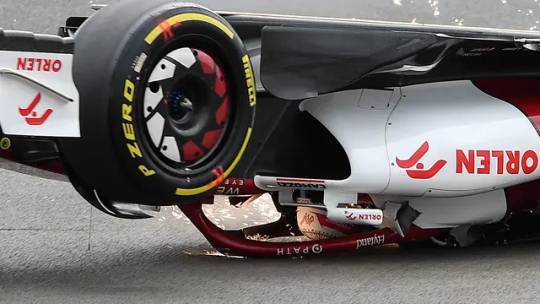
(The Halo saving a driver's life)
2020s: The modern F1 era is significantly safer than the classic era. They do regularly add more regulations to increase safety, however, as there are still massive injuries in F1. Crash structures have improved immensely and now most cars can absorb a majority of the impact from crashing. For example, F1 driver Romain Grosjean went through a steel barrier at 140 MPH and experienced no side effects from the g-force. Years ago this crash would have ended in a fatality. Also, the speed of fire marshals helped get him out of the on-fire car, and the halo device allowed him to pull himself out. In general, it is a fantastic example of how all modern safety measures work together. There are also tighter crash testing rules and more surrounding track evolution (larger gravel traps, smoother curbing, etc.). Medical and fire marshal response has also increased in efficiency and now they can get to a crash within a minute. All in all, the FIA does there best to make F1 as safe as possible for drivers, and have improved massively from it's early years.
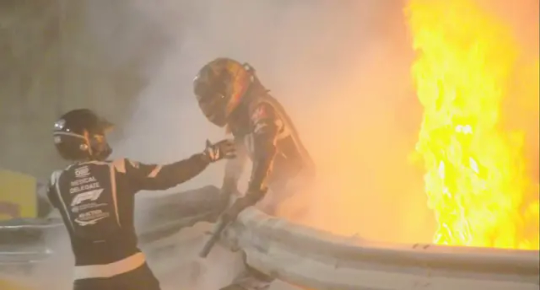
(Grosjean climbing out of the fire after his crash)
Alright, that is all for safety regulation history. While I did not go over every minute detail, I included the most major ones. I hope I answered all questions.
Cheers,
-B
23 notes
·
View notes
Text

Francoise Hardy on the set of Grand Prix (1967)
#francoise hardy#grand prix#formula 1#motorsports#girls and cars#pop culture#aesthetic#moodboard#fashion#vintage#pop culture history#70s#60s movies#60s icons#60s aesthetic#60s music#french girl#french side of tumblr#french cinema#60s film#french music#60s#sixties#1967
387 notes
·
View notes
Text
I can’t thug this out anymore 🙁

#f1#formula 1#logan sargeant#ls2#williams racing#james when i catch you james#i can’t anymore#my poor boy 😞#they should have at least done it after monza or like someone who wasn’t a fucking rookie#they just love repeating history huh?#f1 x reader#ohemgee a hit tweet!
531 notes
·
View notes
Text
everyone thinking that having lewis and carlos do the press conference together was gonna cause drama and here they are giggling and flirting joking with each other
#my 4455 heart 😭❤️#I move very much in silence for lewis + carlos but they are so dear#love all my ferrari boys past and present#lewis is always so giggly with carlos#I think people forget that lewis has more history with carlos than a lot of other drivers on the grid#carlos sainz#carlos sainz jr#lewis hamilton#cs55#lh44#scuderia ferrari#scuderia ferrari hp#4455#atlassian williams racing#williams racing#williams formula 1#williams f1#australian gp 2025#australia gp 2025
321 notes
·
View notes
Text
History repeats itself once again: Oscar vs doors
🎥: McLaren (Instagram)

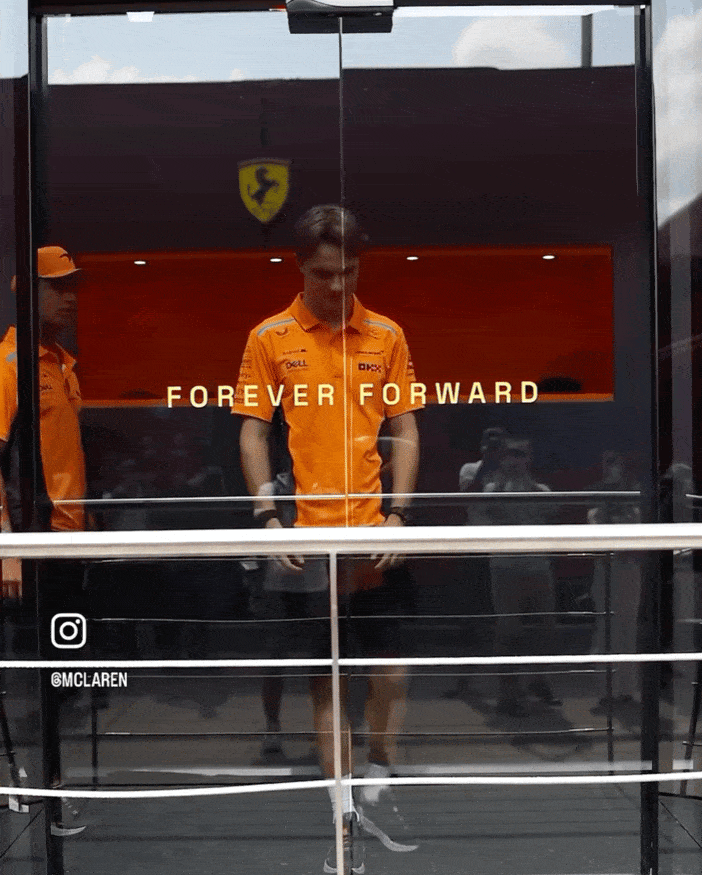
Are you more a Lando or an Oscar:


(They are honestly so yin and yang coded)
Insert flashback music
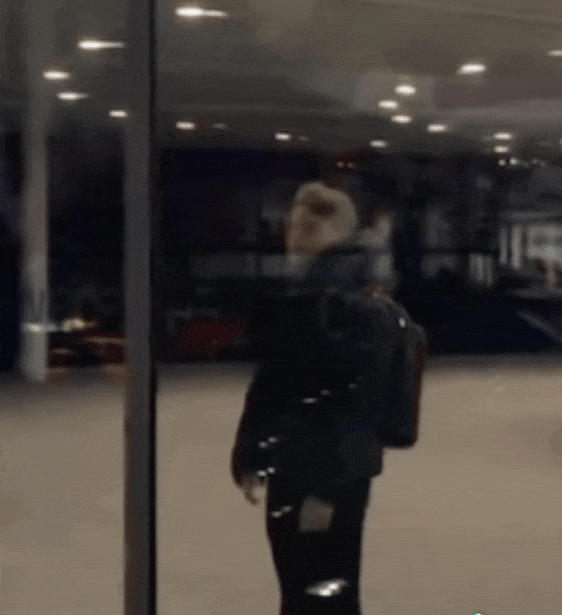

#f1#mclaren#op81#Oscar piastri#lando norris#ln4#814#twinklaren#Landoscar#my gifs#Oscar vs doors#history repeats itself#tag yourself#<- I’m Oscar#how do we live laugh love in these conditions#landoscar yin and yang?#Im definitely no lip reader but does Oscar say - worth a try to Lando?#formula 1#814 gif#op81 gif
467 notes
·
View notes
Text

Oscar Piastri and Lando Norris. Official history makers.




#f1#f1 drivers#mclaren#lando norris#oscar piastri#ln4#op81#formula 1#history#red white and royal blue#carloscar#landoscar
402 notes
·
View notes